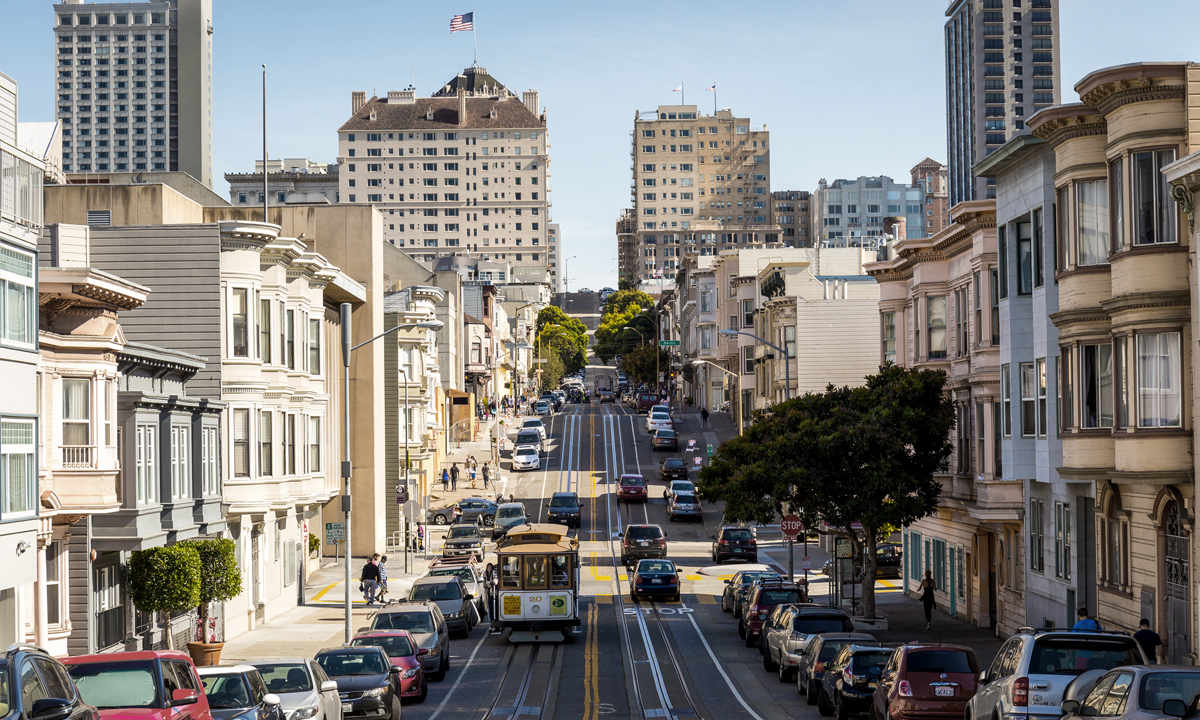Cities should draw on private-sector resources and expertise in building future mobility networks Mobility continues to be a key engine of economic growth for cities, and those that tackle transit challenges head-on will be the most sustainable and attractive for commuters and businesses. Cities looking to recoup lost ridership and reenergize their downtowns should learn from the top urban networks in the world.
The Oliver Wyman Forum and the University of California, Berkeley, convened in December senior leaders across the mobility industry and public policy to present the 2022 Urban Mobility Readiness Index, an annual ranking of 60 major cities on the strength of their transportation networks. A discussion of the index results centered around the different dimensions that define a strong mobility network, followed by a presentation from Tilly Chang, executive director of the San Francisco County Transportation Authority. San Francisco claimed the top ranking in this year’s edition.
The following captures the event’s most important takeaways for mobility and government leaders. You can also watch the event video for yourself:
Public and private sectors need each other
For cities, master mobility plans must start by identifying a strategic ambition and the right path to achieve it. Some cities focus more on providing sustainable or affordable transit, while others prioritize attracting investment from the private sector. Every city is different, and there’s no one-size-fits-all answer.
There is an opportunity for each city to tailor its own unique path. “We estimate that 50% of future infrastructure still needs to be developed to accommodate both the mobility technology changes now in front of us and the rising demand,” said Guillaume Thibault, partner at Oliver Wyman and co-lead of the Oliver Wyman Forum’s Mobility initiative. “We need to think about the future energy and data networks that will be built in these cities, and that consideration needs to be folded into city mobility plans,” Thibault continued. Filling the gap between today’s technology and what’s needed in the future presents a great opportunity, but it’s one that can’t be met by any single actor.
The cost, coordination, and expertise it takes to build a holistic mobility network must be shared by establishing public-private partnerships. Some of the top cities in the index actively work with the private sector to create new mobility offerings or improve existing ones. San Francisco’s strong attractiveness to the private sector is, in part, what launched it to the top spot in the Urban Mobility Readiness Index.
San Francisco marries tradition and innovation
Cities need more than just the ability to secure investment; they need to be open to innovation and embracing new mobility technologies. San Francisco excels at both.
A rich ecosystem of academia and Silicon Valley talent have made San Francisco a global hub for mobility-as-a-service and automated vehicle technologies. The city’s receptiveness to new technologies has allowed it to secure investments to bolster its infrastructure, particularly in strengthening its multimodal network. That formula will drive an upcoming pilot of autonomous shuttles in San Francisco’s Treasure Island neighborhood.
Partnering with the private sector is a core component of the Bay Area’s mobility vision for 2050. In her keynote presentation, Chang discussed some of the details of that plan, including recent initiatives to improve safety, reduce traffic, experiment further with new mobility technologies, and expand the mass transit network.
And while San Francisco experiments with cutting-edge mobility tech, authorities are keeping an eye on more traditional modes as well. Mass transit ridership remains at just over 50% of pre-COVID levels, but Chang is optimistic that it will recover. “I do believe that workers will come back, as office rents are likely to adjust, and we will see a different cohort of downtown lessees and employers,” Chang said. Continued investment in mass transit, like electrifying its rail network and a new central subway that provides more north-south service, remains a priority for the city as “riders are rational and respond to fast and reliable service.”
Urban mobility takes different paths around the world
San Francisco encapsulates the story for many North American cities. They offer strong market attractiveness for business, usually through strong university presences and high airport volumes, that allows for greater innovation in mobility tech and infrastructure. Other regions boast their own unique strengths: Europe and Latin America have high public transit and electric vehicle use, while Middle Eastern cities like Riyadh and Jeddah climbed up the rankings thanks to their heavy investment to develop mobility infrastructure like new metro systems.
And while many Asian cities offer efficient and affordable mass transit, some metropolises, like Singapore and Tokyo, slid in the rankings. Many cities are simply maintaining a status quo while competitor cities in other regions — namely in Europe — continue to invest more in new mobility solutions. Both Stockholm and Munich, top 10 cities in the index, plan to build mobility hubs to encourage free-flowing sharing services.
The Oliver Wyman Forum’s Urban Mobility Index is a city-by-city ranking, but it’s also important for business and city leaders to understand urban mobility from a more macro view to better identify new, innovative opportunities in the future.

